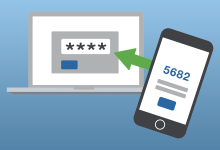Combatting the Trojan Virus: Best Practices for Cybersecurity

Much like its legendary namesake, the Trojan virus is an insidious enemy that has been wreaking havoc in the world of technology. The bad news is that these malicious viruses have been around since the dawn of computers and are still a potent threat today.
The good news? There are a number of best practices you can implement to protect yourself, your business, and your data from a Trojan virus attack. In this article, we’ll walk through all the steps you should be taking to stay ahead of Trojans—and other malware threats—so that you can be sure your systems are safe and secure.
By following our advice and implementing these best practices, you can ensure that your business won’t become the next victim in this never-ending battle between man and machine. So let’s get started!
Defining the Trojan Virus
When it comes to cyber security, one of the biggest threats is the Trojan virus. This malicious software sneaks onto your device through the guise of seemingly harmless software or disguised links and can wreak havoc on your data, allowing hackers to gain access to your personal information. So, how can you identify and stop a Trojan virus in its tracks?
First and foremost, it’s important to define what a Trojan virus is. A Trojan virus is a type of malware disguised as legitimate software – often as an alliance data file or an installer – that gives hackers access to your computer when installed or opened. The hidden code can take control of your computer and even send stolen data back to the hacker’s server.
Overall, Trojans are some of the most dangerous types of malware out there since they can remain undetected while giving hackers free reign over what they can do with it. It’s important for any business or individual using the internet and connected devices to be aware of this risk and have measures in place to address them.
What Trojan Viruses Can Do
A Trojan virus is a type of malicious software that can wreak serious havoc on your computer system. It gets its name from the famous story of the Trojan Horse, as it can disguise itself as a harmless program until it’s able to get deep enough into your system to cause major damage.
When activated, Trojans can monitor and collect information from your computer, steal sensitive data, delete files, hijack your web camera and microphone, or act as a backdoor for further cyberattacks and malicious code. Even worse– it’s often difficult to detect these viruses without the help of antivirus software.
It’s important to be aware of the potential threats posed by Trojan viruses so that you can protect yourself and your digital devices. Fortunately, there are some simple practices you can employ to protect yourself from attack: setting up firewalls to block unauthorized access and maintaining regular antivirus scans of all connected PCs. Taking these steps will help ensure your system remains secure from Trojans and other malicious software.
How to Protect Against Trojans
Protecting yourself against Trojans is a must if you want to keep your data and information safe. Here are the best practices to help keep you and your data secure:
Keep Your Operating System Up to Date
Your operating system is the foundation of your computer, and it requires regular updates in order to be secure. Be sure to install updates when they become available, as it helps patch security holes that allow Trojans to enter your system.
Install Antivirus Software
Antivirus software is crucial for protecting against Trojans, so make sure that you have a good quality program installed on your computer. It should have features such as real-time scanning, web protection, automated scans, and other tools that can help protect you from malicious software.
Don’t Download Unverified Software
Beware of sites offering “free” software downloads—this is often where Trojans hide. Before downloading anything from websites or email attachments, always check for a digital signature or other proof that the source is reliable. Be wary of suspicious email attachments, especially if they come from an unknown source, as they could contain malicious files like Trojans.
Enable Firewall Settings
Your firewall provides an extra layer of protection against Trojans, so make sure it’s enabled on all your devices. This can prevent unauthorized access by blocking malicious traffic from coming into or out of your network. If possible, change the default settings of the firewall so that it can better block suspicious activities.
By following these best practices for cybersecurity and staying alert for signs of a Trojan virus attack, you can keep yourself safe from cyber threats!
Promoted contents:
- Who is the founder of BBC?
- Toshiba Corporation: Who is the founder of Toshiba?
- Google Releases Android 14 Beta 3, With Platform Stability and New Features
- Who founded Nokia? Here is all you need to know
- Who is the founder of HTC Corporation?
- Fast Charging and Multiple Variants: Samsung’s Galaxy Tab S9+ and Tab S9 Ultra Unveiled
- Who is the founder of Realme?
- The Mobvoi TicWatch 5 Pro has been launched
- Rumours of the Galaxy S23 FE: A budget-friendly variant of the Galaxy S23
- The upcoming iOS 17 will add the ability to use your locked iPhone as a smart display
Tips for Reducing the Risk of Trojan Attacks
It’s important to keep in mind that the best way to protect your device from a Trojan virus is proactive prevention. Here are a few ways you can do that:
Disable unnecessary features
Be sure to disable any features on your device that aren’t being used. For example, if you don’t need Bluetooth, be sure to turn it off as it can be a common entry point for Trojans. You should also make sure that remote access is disabled, as this prevents someone from controlling your computer remotely.
Update software regularly
Oftentimes, updates contain patches to help protect your computer against the latest cyber threats. Keeping your operating system, software and apps updated with the latest version help ensure you have the most up-to-date security measures in place against Trojans.
Scan regularly
Make sure to run regular scans on your device and networks to detect any potential malware or viruses. This will allow you to take action as soon as you find anything out of the ordinary. Be sure to invest in an antivirus program with advanced protection technologies and regularly update it for optimal defence against Trojans and other kinds of malware.
Best Practices for Keeping Online Accounts Secure
One of the most effective ways to prevent Trojan viruses from accessing your computer is to keep your online accounts secure. Here are a few best practices to help you do just that:
Use strong passwords
Strong passwords are essential to online security. Make sure that all of your passwords are unique and include a mix of numbers, symbols and uppercase and lowercase letters. Also, be sure to change your passwords frequently and log out of accounts when you’re done using them.
Enable two-factor authentication (2FA)
Two-factor authentication or 2FA adds an extra layer of security to your online accounts by requiring a second form of authentication beyond just a password. This can be done through verification codes sent via text message or through biometric authentication such as facial recognition or fingerprint scanning.
Use antivirus software
Antivirus software helps detect and mitigate threats from malicious programs such as Trojans, worms, and ransomware by monitoring the computer for unusual activities, blocking malicious websites and files, and quarantining any suspicious programs it detects.
By implementing these best practices for keeping your online accounts secure, you can help protect yourself from the threats posed by Trojans and other malware.
Software for Identifying and Removing Trojans
Software is available for identifying and removing Trojans, so one of your best practices when it comes to Trojan viruses is to invest in reliable anti-malware software. Having the right software can be a real lifesaver when it comes to stopping and removing Trojans from your system.
Some things to keep in mind when you’re shopping for software are:
- What kind of support does the company offer? Make sure they have a support team that’s available via phone, email, or chat 24/7.
- What kind of security features does it have? Look for things like real-time scanning, heuristic detection algorithms, sandboxing, and automated updates.
- Does it provide additional protection against other online threats? In addition to stopping Trojans, make sure that the software can protect against other threats like ransomware, rootkits, keyloggers, and phishing attacks.
Having that extra layer of protection can make a huge difference in terms of protecting your computer from malicious programs like Trojans. So make sure to invest in good anti-malware software with the features you need for staying safe online.
Recommended software for removing the trojan virus from your computer includes;
- ESET Node32
- Malwarebytes
- Avast One Antivirus
- Kaspersky Antivirus
- Norton Antivirus
- AVG Antivirus Free
- Baidu Antivirus
- Bitdefender Antivirus
- RegRun reanimator
- SUPERAntiSpyware
- ZoneAlarm Free Antivirus
- ZBot Trojan Remover
Conclusion
When it comes to protecting your digital assets, it’s important to understand the potential threats posed by Trojans and take preventive measures to defend against them. Trojans are stealthy and evasive and can lead to major data breaches and losses. The best way to protect against Trojans is to employ a comprehensive cybersecurity strategy that includes antivirus software, regular system updates, firewalls, and other security measures.
It may also be worth considering hiring a cybersecurity expert to assess your network and systems for weaknesses and suggest additional defences. By staying informed on the latest Trojans, taking preventive steps, and employing the help of professionals when necessary, you can ensure the security of your assets and the safety of your data.








